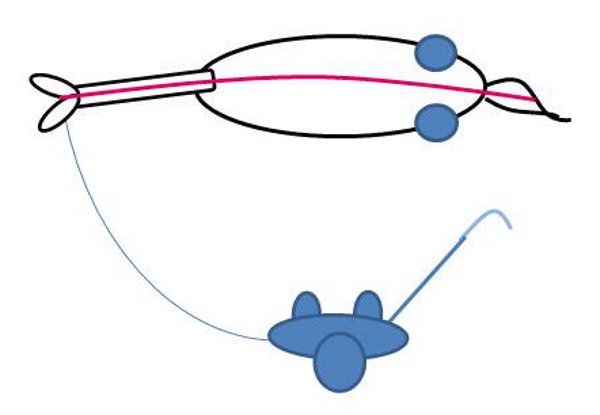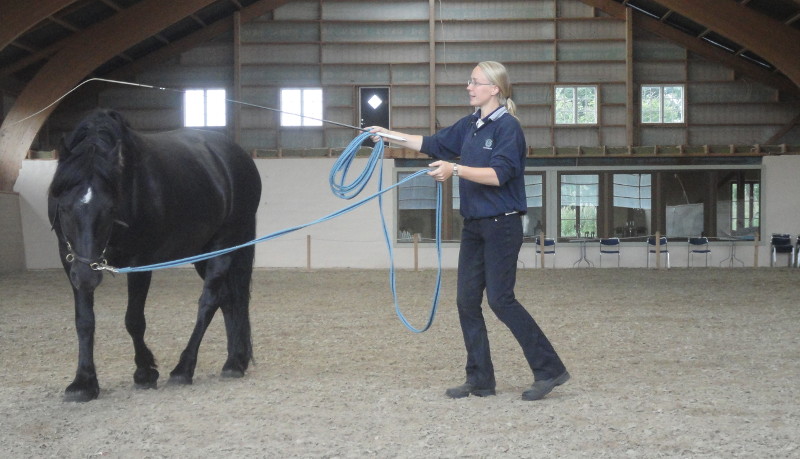In longeing the horse is moving on a bigger circle around us. In this position we don’t have to move as much as the horse and it is thus suitable for work in walk, trot and canter.
When the work in groundwork is working decently it is time to start longeing. In longeing you use exactly the same aids as the ones you use in groundwork. The difference is that you are no longer walking backwards in front of the horse, but you are facing the horse belly to belly. In addition, the horse is a bit further away compared to the groundwork position. This distance between you and the horse can make the communication a bit more difficult, but it is just to practice and eventually it will be as easy as in groundwork.

It is important to constantly give with the longe line. It should be “smiling”, i.e. when not used it should slack. Of course the line can be used when needed but you must never hold on to it. If you hold on to it the horse must tense the muscles around its neck to protect itself and then you will never get a proper relaxation or bending and stelling. In addition, you must never yank the line. If the situation demands it you can grab on properly, but do grab in a “rubbery” way, to slowly stretch the line and avoid sudden jerks in the neck, and then directly give with the line again.
How far from the horse you are depends on your education. In the beginning you walk close enough to be able to touch the horse with the whip and when your communication is improving you can move the horse further away. This means that you have to walk more in the beginning, to avoid the circle to become too small.
